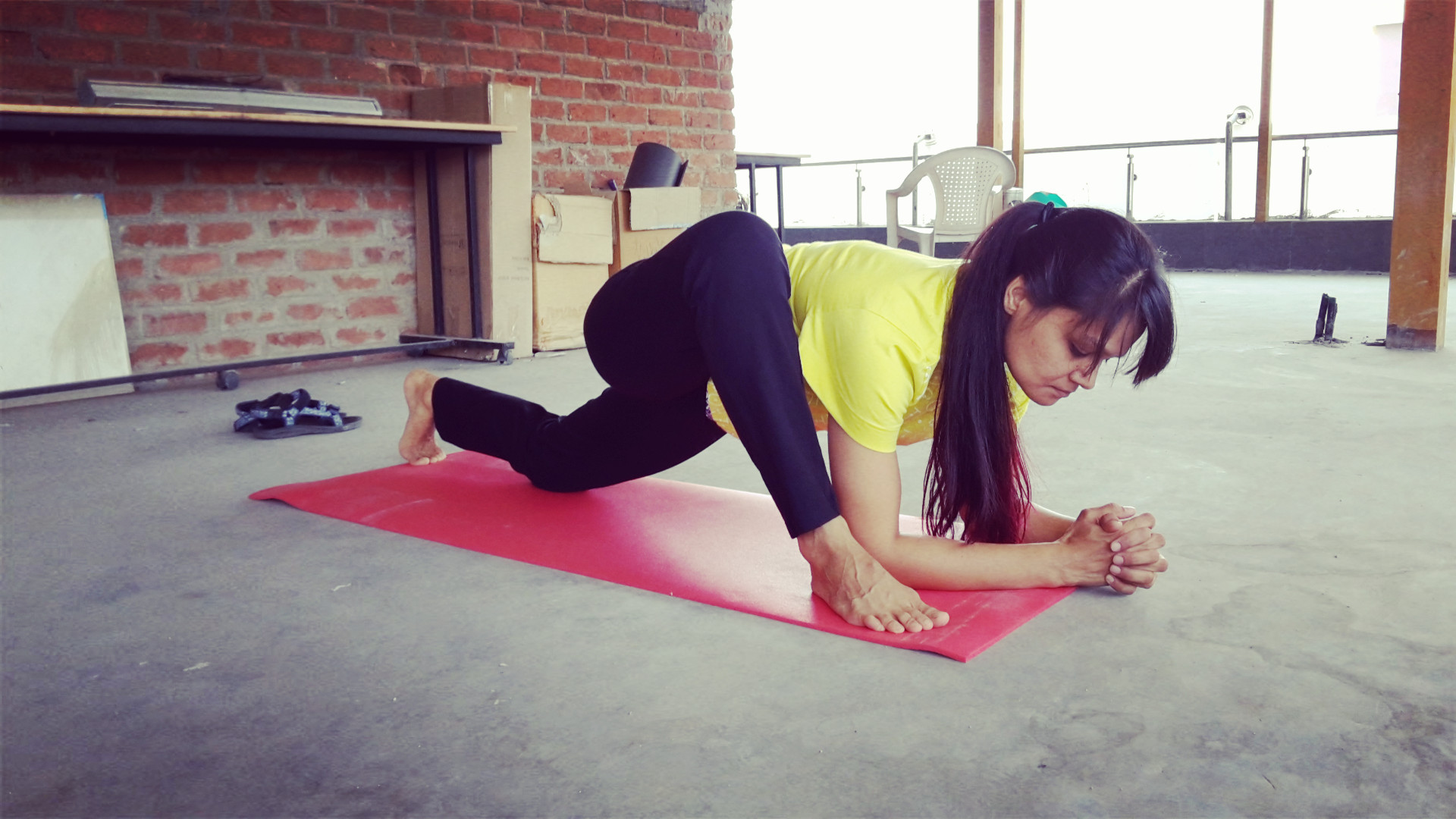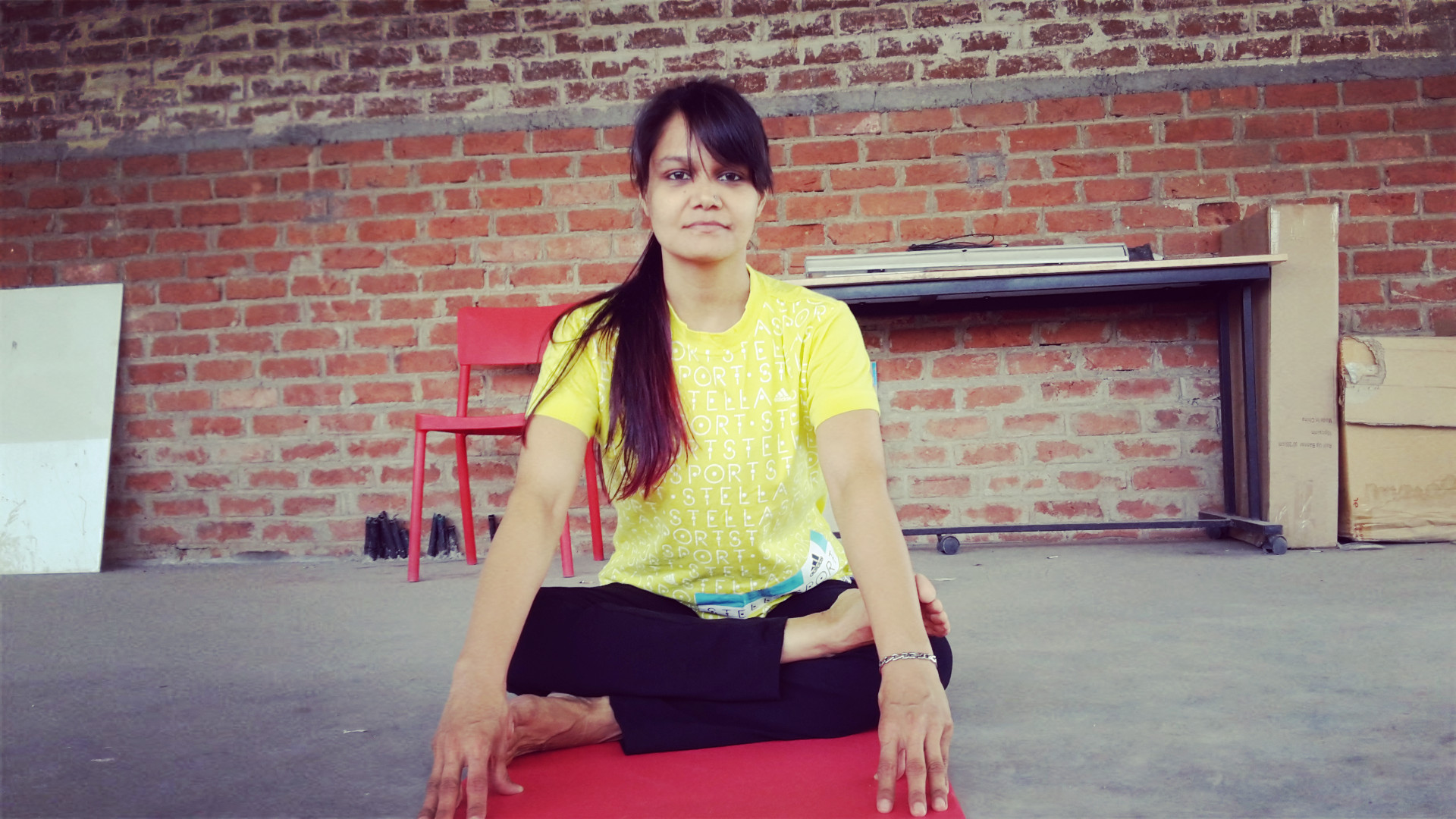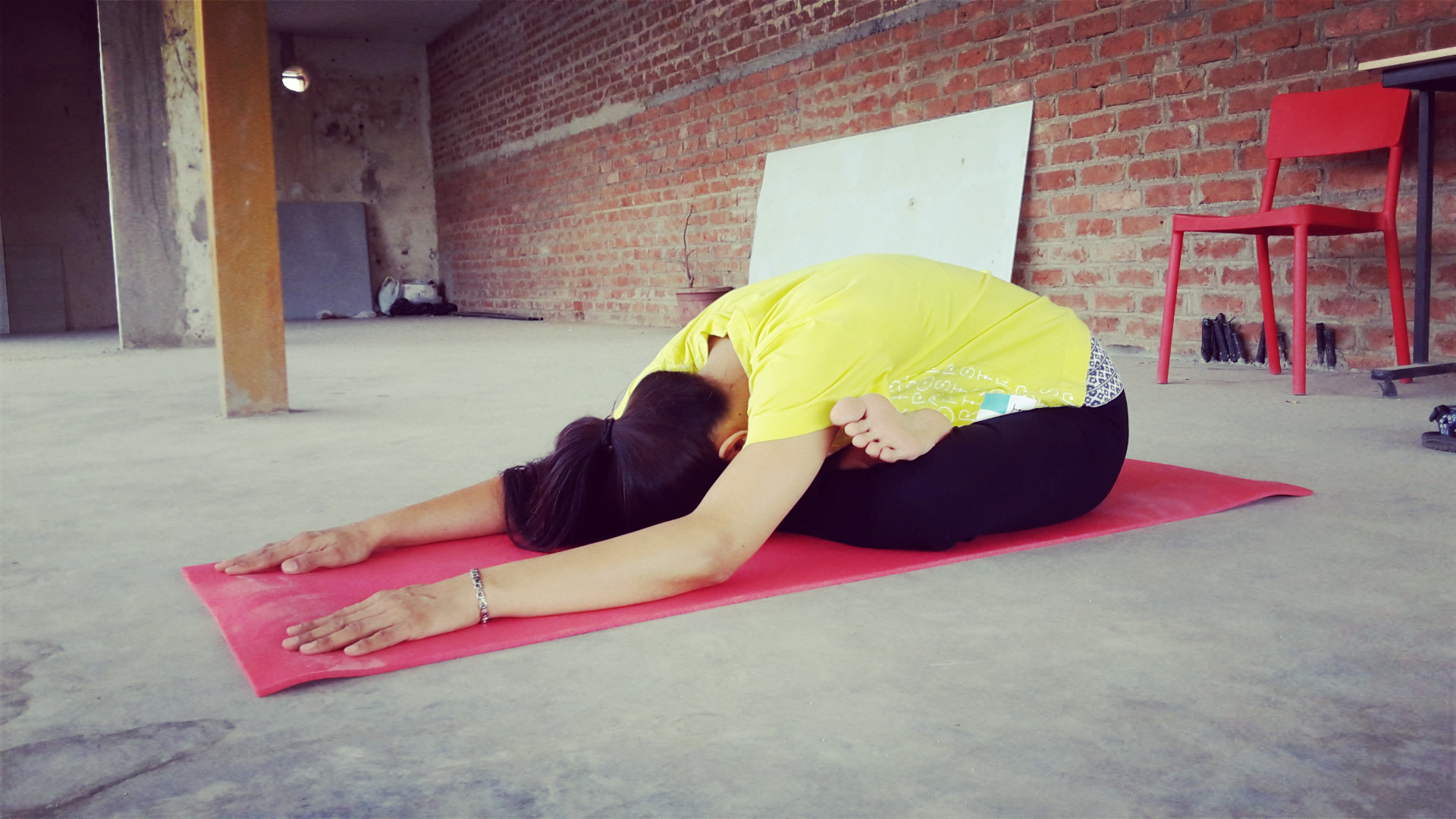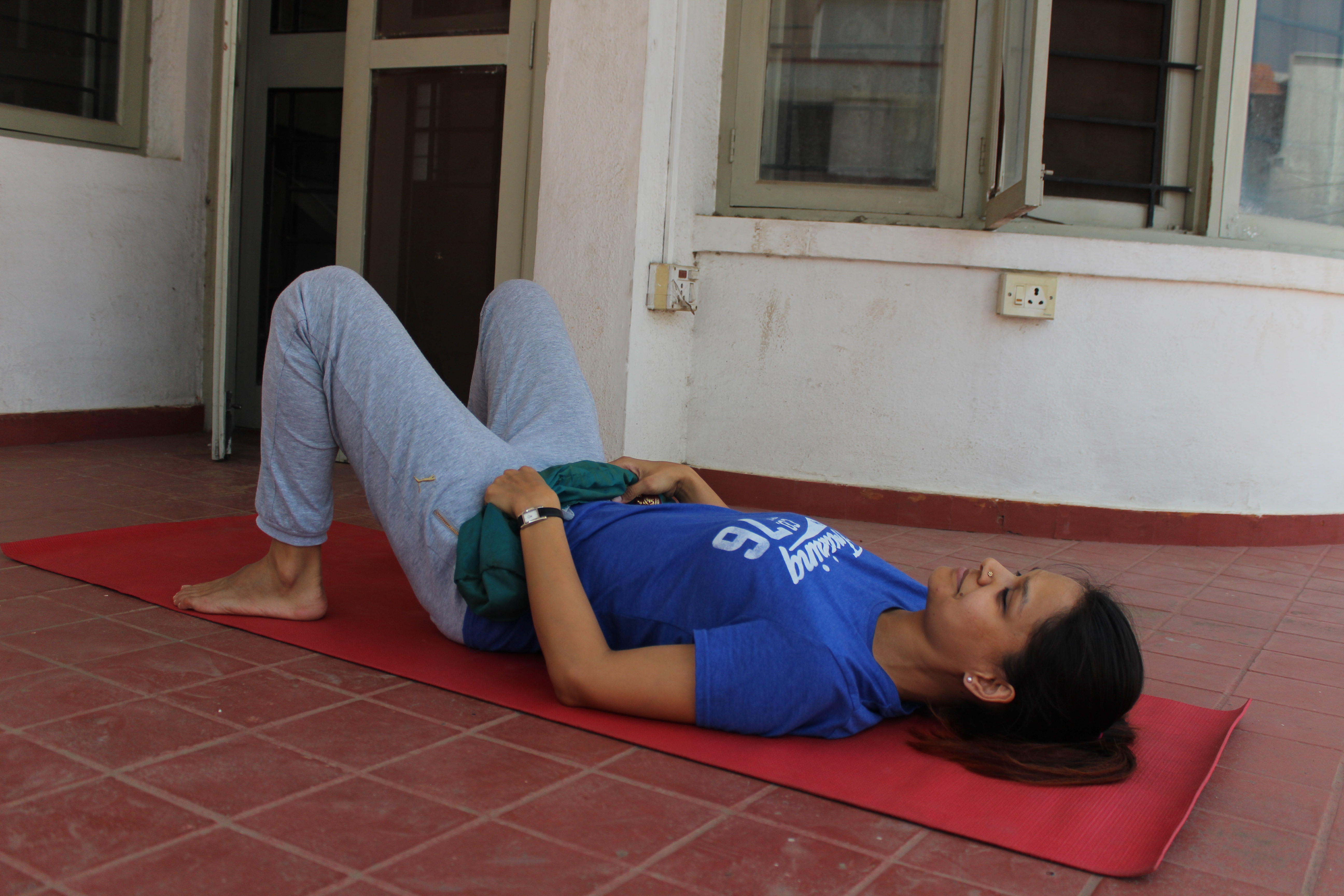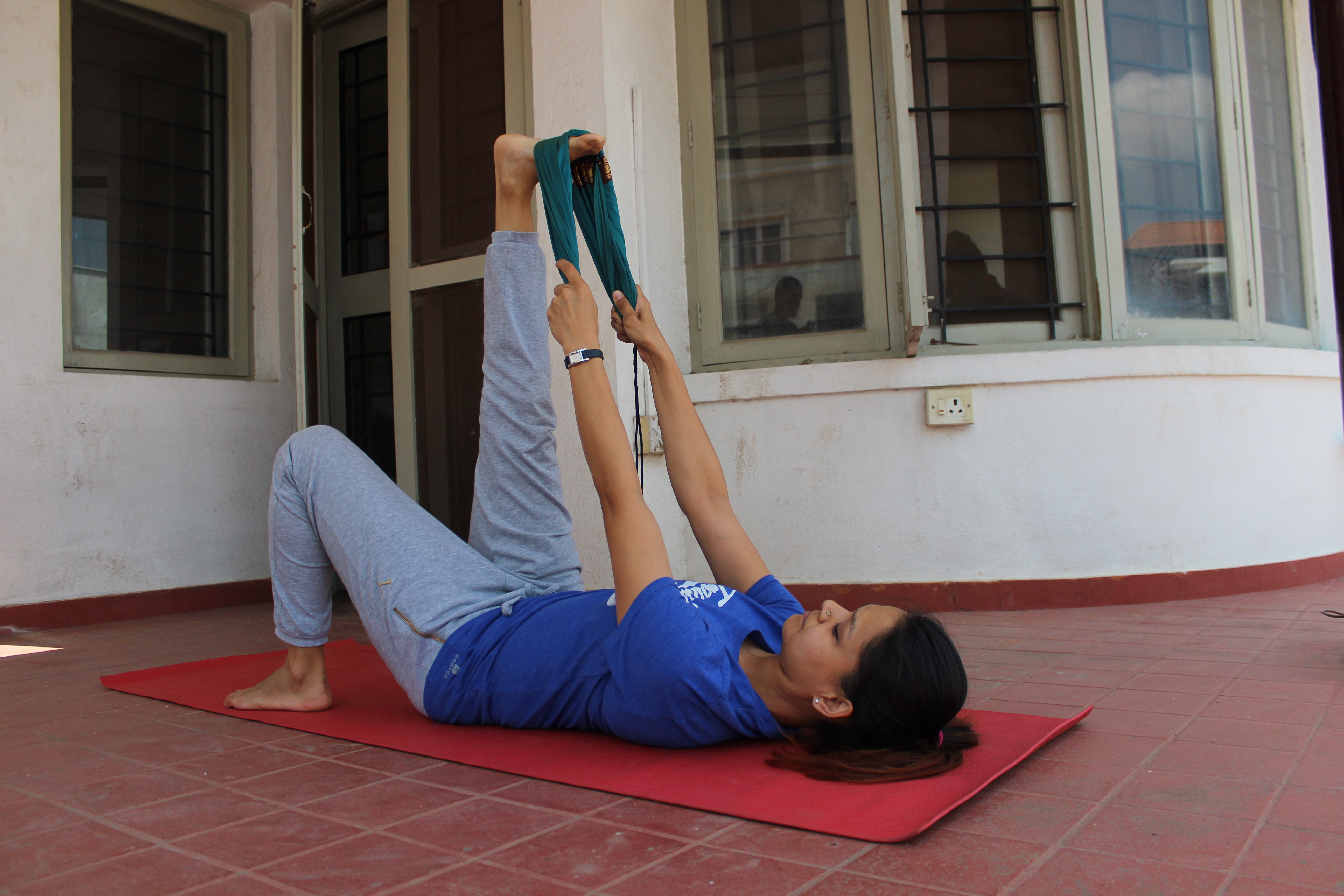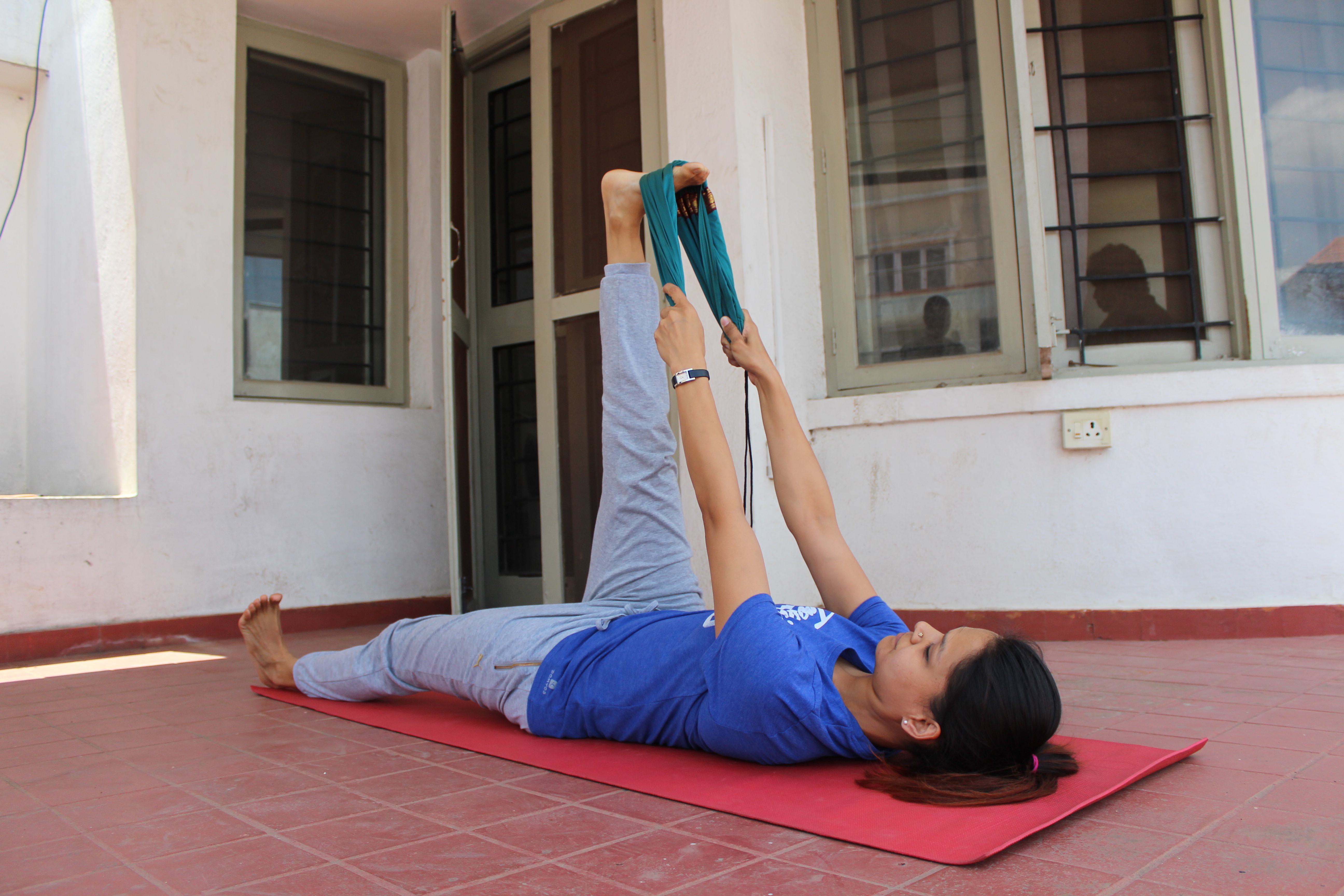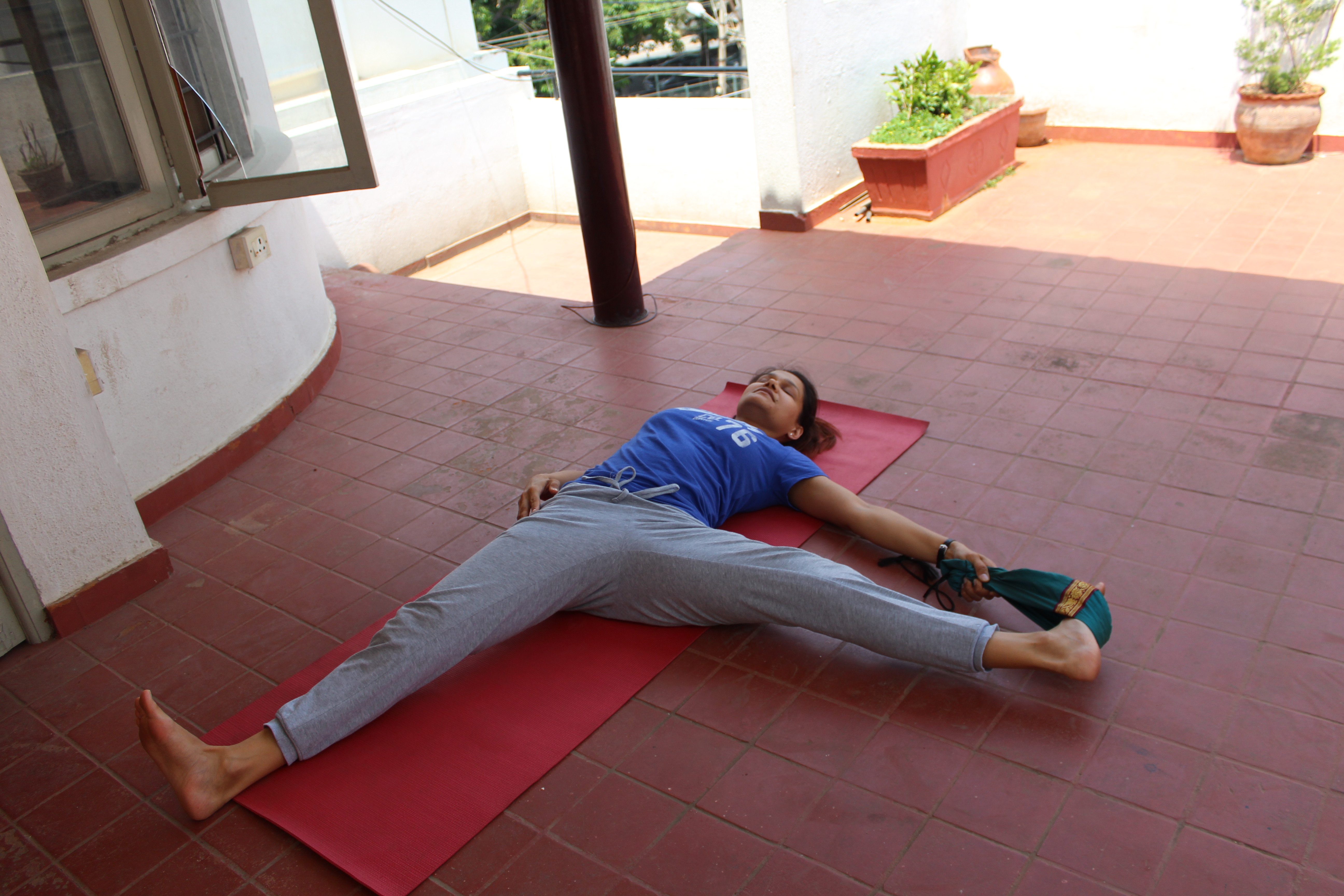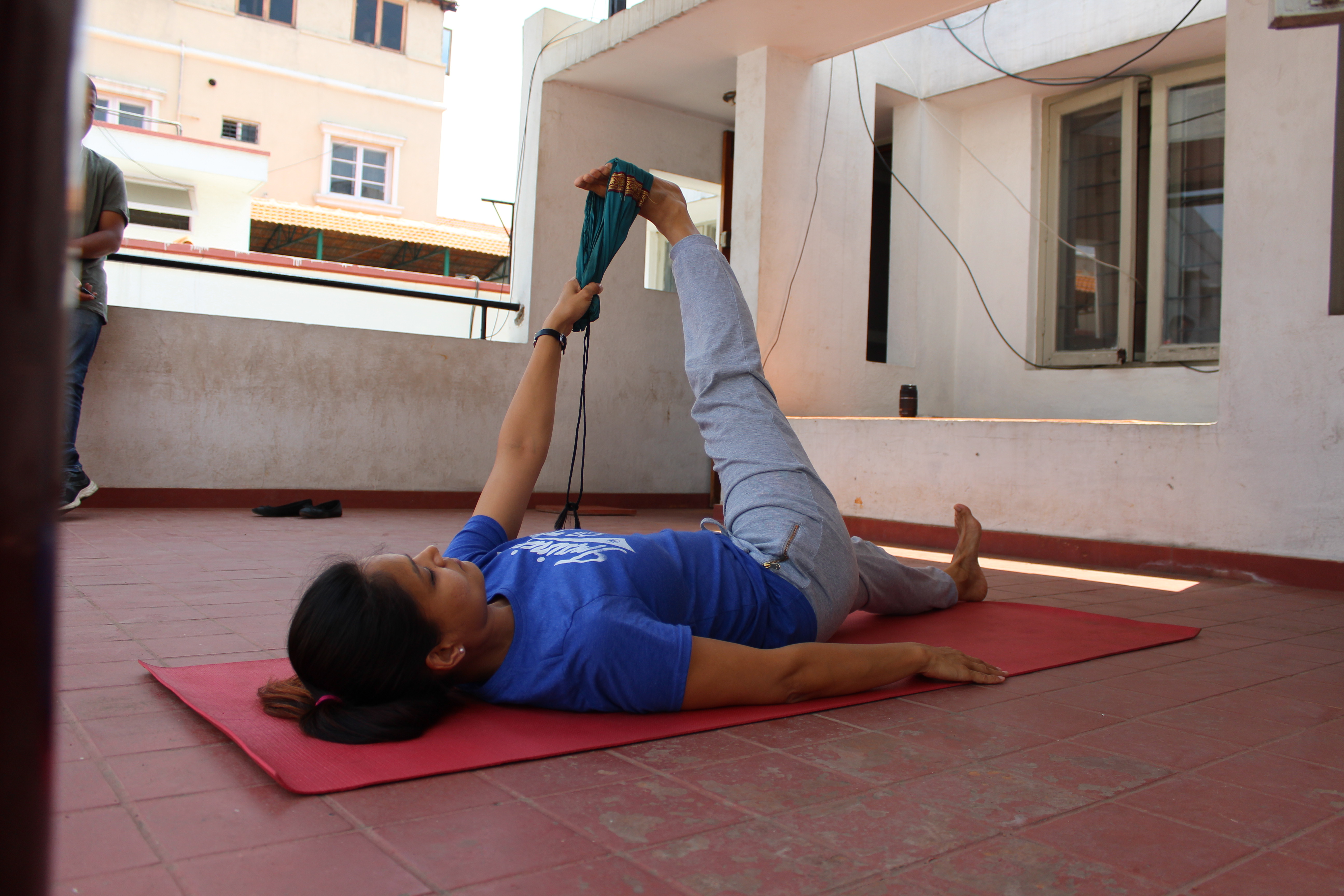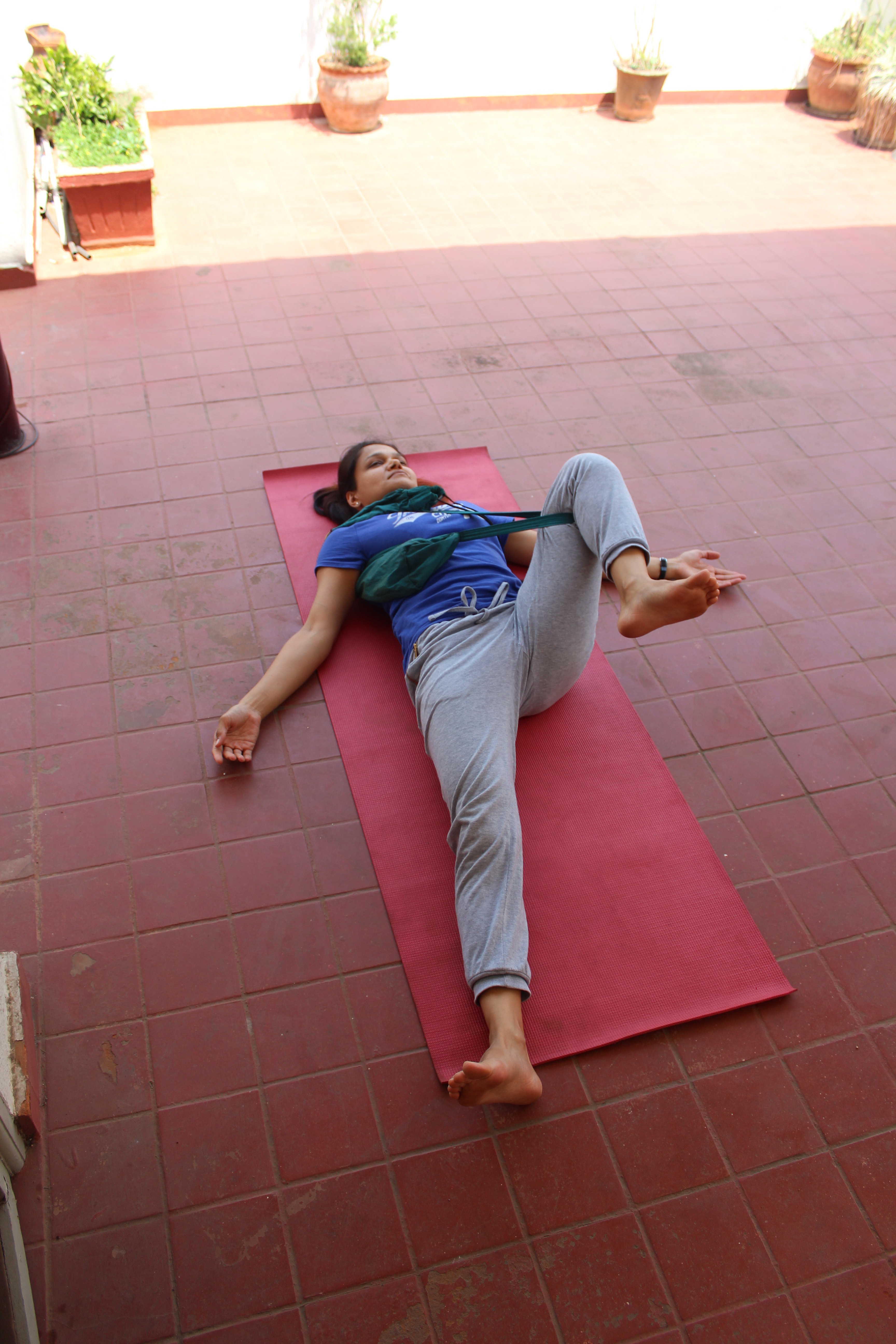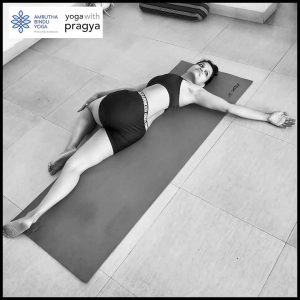
Marichi means ray of light. The story of Sage Marichi goes back to the creation of the universe. (Beyond Asanas: The Myths and Legends Behind Yogic Postures, Pragya Bhatt)
Before I begin writing a blog, I like to research the topic a little more. Surprisingly, there is very little information for this asana online. Which is ironic because the Supta Marichyasana is practiced widely as a closing posture in yoga classes all over the world. In writing this blog I had to look at my own experience with the posture and I also asked Medha for hers. My introduction to this asana was through Baba Ramdev’s yog shivirs, where he endorses this asana as a great way to trim excess fat from the sides.
However, thousands of hours of asana practice later, I would say it’s power lies in its ability to gently stretch the spine, the lower back, the shoulders and the sides of your body all at one go. Just a couple of years ago it was impossible for my knee to rest on the floor, my shoulders would lift off of the floor, I wouldn’t be able to breathe and it would hurt to push my knee down!
Over the years I’ve found that the key lies in the abdomen and the breath. The breath must be long and steady and the abdomen relaxed. Once this is in place it becomes easier for the body to sink into the posture. Watch this video for more pointers on how to do this asana safely.
Benefits of the Supta Marichyasana:
- Helps to reduce lower backache.
- Reduces stiffness on the neck and shoulders.
- Great to keep the spine supple and flexible.
- Increases blood circulation to the abdominal organs.
- Gently massages the digestive organs thereby improving digestion.
- Improves flexibility of the hip, knees and ankles.
When to avoid this asana:
- Menstruation.
- If you’ve recently had abdominal surgery.
- When you’re recovering from a back injury.
Participate in our Work From Home Challenge this entire month and win a giveaway at the end of the challenge. Download our practice tracker and asana sequence below:
[ddownload id=”8554″] Practice Tracker
[ddownload id=”8549″] Yoga Sequence
For more information go to:
Medha Bhaskar: https://www.instagram.com/medha.bhaskar/
Amrutha Bindu Yoga: https://www.amruthabindu.com/
Pragya Bhatt: https://www.instagram.com/yogawithpragya/
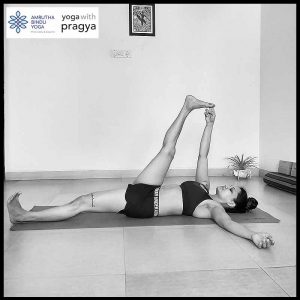
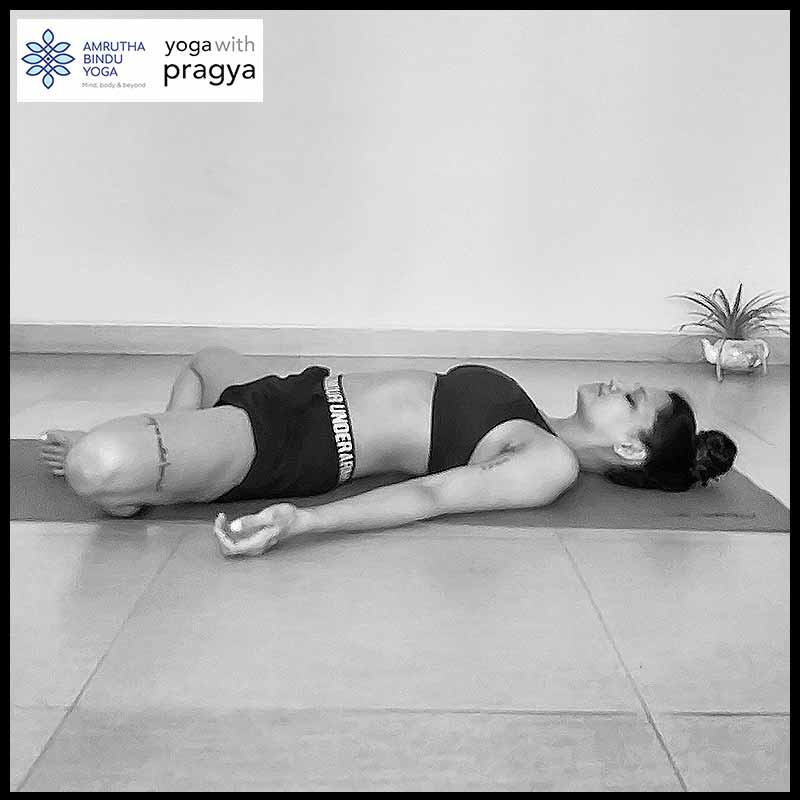
 1. Start with the Ashwasanchalanasana, also called the Low Lunge. Ensure that your back knee is locked and try and push your hips as close to the floor as possible. This creates opposing forces within the body and this helps in easing out the kinks in your lower back. This also stretches the hip joint and strengthens the quads. When you focus on pushing your heel back, you will feel a stretch on the back of the calves as well.
1. Start with the Ashwasanchalanasana, also called the Low Lunge. Ensure that your back knee is locked and try and push your hips as close to the floor as possible. This creates opposing forces within the body and this helps in easing out the kinks in your lower back. This also stretches the hip joint and strengthens the quads. When you focus on pushing your heel back, you will feel a stretch on the back of the calves as well.
